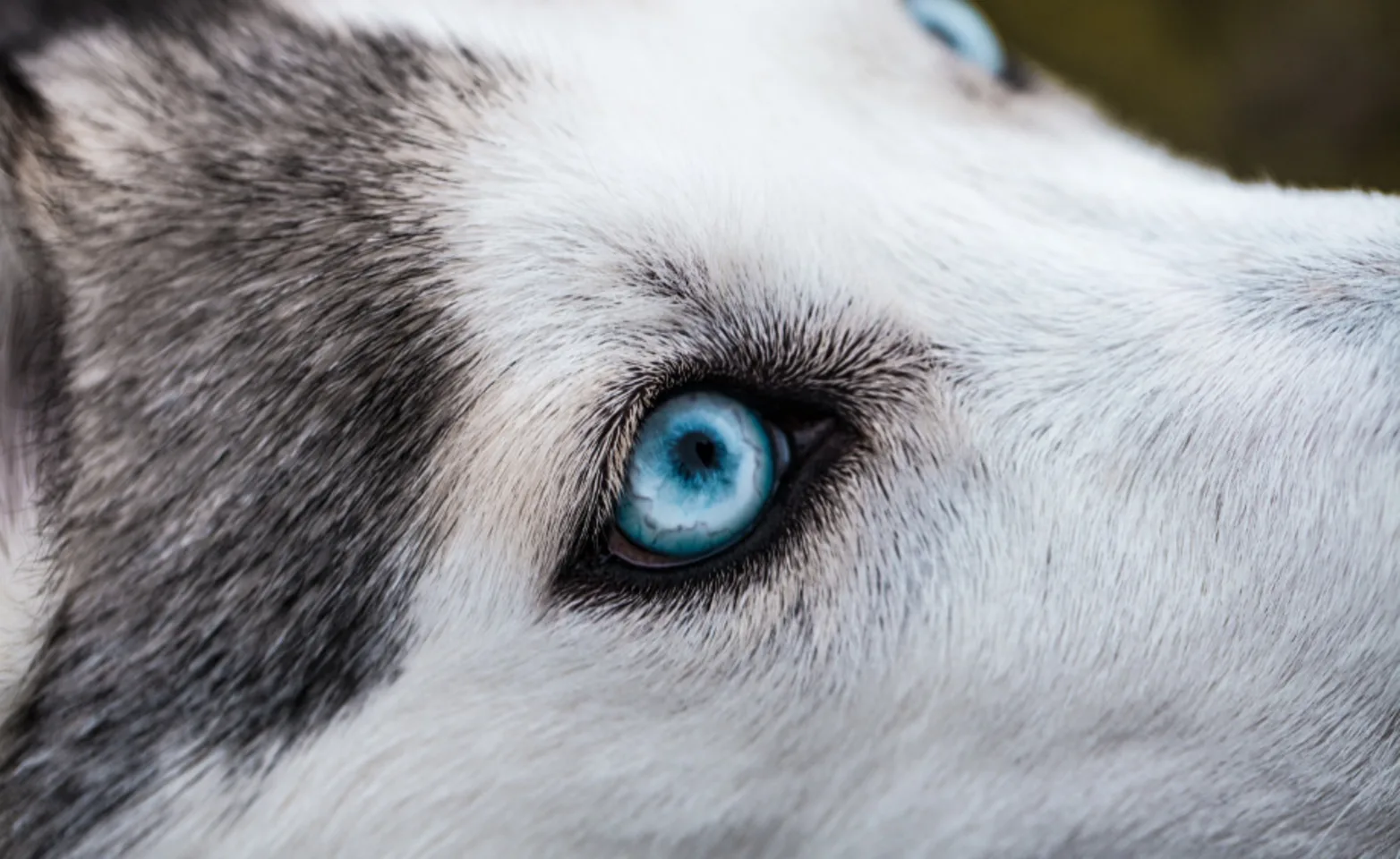Veterinary Vision Animal Eye Specialists

What Is A Cataract?
A cataract is a clouding of the lens inside the eye and is the most common cause of blindness in dogs. Cataracts can be caused by injuries or diabetes, but most cataracts in dogs are inherited.
Any opacity in the lens is called a cataract; very small spots do not significantly affect vision. However, most cataracts will progress, and ultimately cause blindness. The lens is located behind the colored iris; thus when an advanced cataract develops, the pupil may appear white. Vision through a mature cataract is like looking through white painted glass.
How Are Pet Cataracts Treated?
As of right now, there are no medications which are effective in treating cataracts. A cataract is not a growth, it is a change in color and opacity of the normal lens structure.
Treatment requires surgical removal of the discolored lens material and, once removed, the cataract will not recur. Cataracts are not treated with lasers in people or in pets; rather, lens removal utilizes phacoemulsification ultrasound technology to break up and remove the lens material, which is the same procedure used in people.
Once the lens is removed, it is replaced with an artificial lens inserted into a pocket formed by the original lens capsule which remains in the eye. Occasionally, there is a weakness in this capsule which is detected during the cataract surgery. In these cases, replacement of the lens may not be possible. Cataract removal without lens replacement results in vision which is somewhat blurry but much better than before surgery. One or both eyes may be candidates for cataract surgery; the doctor will discuss these options with you.
Cataract Information
How effective is Cataract Surgery for Dogs, Cats, and Other Pets?
Cataract surgery is approximately 85% successful. However, this means that in 15% of cases, complications may prevent vision recovery or result in later vision loss. The purpose of the examinations before and after cataract surgery is to detect, prevent, or treat these complications early whenever possible. In uncomplicated cases, vision will begin to noticeably improve within a few days; after six weeks, healing is usually complete and vision is at its best.
What About Medical Treatment for Cataracts?
There is no effective medical treatment for cataracts.
The human and veterinary ophthalmology communities are united in their conclusion that cataract is a surgical disease. Veterinarians are smart people, but we are also extremely empathetic and sensitive to the economic concerns of our clients. An understandable unwillingness to pressure clients into expensive surgery may leave us vulnerable to the false promises of unregulated “nutraceuticals.” Antioxidant “cataract dissolving” eye drops are one example of this. The thought of simple eye drops that can help to avoid expensive surgery is so very attractive. Unfortunately, this is one of those situations that is definitely too good to be true.
Not only is there no scientific evidence that medical therapy for the prevention or dissolution of cataracts using antioxidants is effective, the few published studies that have been done present evidence that antioxidant cataract dissolution drops like Ocluvet don’t work. For a summary, see this skeptvet article.
Although these eye drops are obviously less expensive than surgery, they are still moderately expensive ($50-100/bottle), need to be continued indefinitely, and are a complete waste of your client’s money. Their use may actually have a detrimental effect by encouraging client’s to leave their pet’s cataracts unmonitored until such time as complications such as lens induced uveitis, lens luxation, and secondary glaucoma develop, preventing successful surgery.
The best recommendation to a client whose pet has cataracts is early evaluation by a veterinary ophthalmologist so that a surgical plan can be made that optimized recovery of vision and quality of life.
UPDATE: A pharmaceutical eye drop may soon become available to reduce the risk of the hyperglycemic cataract development in dogs.
Preparing for Your Pet’s Cataract Surgery
Once the doctor has examined your pet and cataract surgery has been agreed upon, a blood analysis will be done to detect any generalized illness and assess any inherent risks associated with general anesthesia.
Eye drops will be dispensed to be started before the cataract surgery. You will use these medications after the cataract surgery as well.
Your pet will be admitted to the hospital on the morning of the cataract surgery.
The hair will be clipped from the area around the eyes and one the front legs (to administer the anesthetic).
Prior to the operation, an electroretinogram test will be performed to confirm adequate function of the retina.
After Cataract Surgery
The cataract surgery takes approximately one hour per eye. Your pet will be monitored in the hospital for a few hours after cataract surgery.
Although overnight hospitalization is not required, they will need to come back for the first re-examination the day after cataract surgery.
When your pet goes home, they will be wearing a firm plastic collar to prevent them from rubbing at the eyes. Although they may not like it, they will learn to tolerate the collar and can eat and sleep with it on.
It is essential to avoid injury to the eyes after this delicate surgery. Please keep your pet quiet and avoid direct nose to nose contact with other animals during the first two weeks post-surgery.
No bathing or uncontrolled exercise.
Leash-walking is acceptable.
Following cataract surgery (in people as well as dogs) there is no substantial discomfort; thus pain medication is not necessary. Dogs have a greater degree of post-operative inflammation, however, so anti-inflammatory medications are used extensively and for a longer period after surgery than is needed for our human counterparts.
Additional re-examinations will be scheduled at 1, 2, 4, and 6 weeks after the cataract surgery to monitor progress and then as needed.
